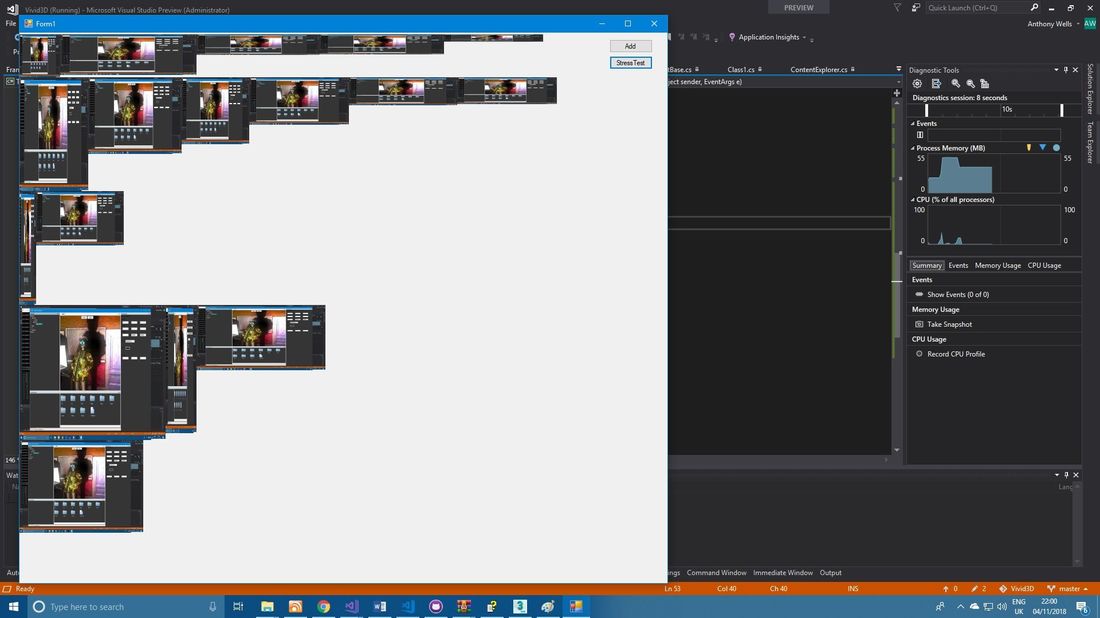Hi,
I am trying to code a Lightmapper for my 3D engine, and as such I implemented a TexturePacker/Atlas, and although it's working OK, I find it oddly in-effecient. It mostly packs all to the left and leaves a lot of free space to the right.
Here is the code, can you spot anything wrong, or suggest another way to do it? Cheers. I have a test win.form app if required, I could upload it.
Cheers.
using System.Collections.Generic;
namespace Vivid3D.Util.Texture
{
public class TexTree
{
public static List<TreeLeaf> Leafs = new List<TreeLeaf>();
public TreeLeaf Root
{
get;
set;
}
public Rect RC;
public TexTree ( int w, int h )
{
RC = new Rect ( 0, 0, w, h );
//Root = ne
//w TreeLeaf (new Rect(0,0,w,h));
}
public TreeLeaf Insert ( int w, int h, int id = -1 )
{
//return Root.Insert ( w, h );
if ( Root == null )
{
Root = new TreeLeaf ( new Rect ( 0, 0, w, h ), id )
{
Used = true
};
Root.Child [ 0 ] = new TreeLeaf ( new Rect ( 0, h, RC.W, RC.H - h ) );
Root.Child [ 1 ] = new TreeLeaf ( new Rect ( w, 0, RC.W - w, h ) );
}
else
{
return Root.Insert ( w, h );
}
return Root;
}
}
public class TreeLeaf
{
public TreeLeaf[] Child = new TreeLeaf[2];
public Rect RC = new Rect();
public int TexID = 0;
public bool Used = false;
public TreeLeaf ( Rect s, int id = -1 )
{
RC = s;
TexID = -1;
Child [ 0 ] = Child [ 1 ] = null;
TexTree.Leafs.Add ( this );
}
public TreeLeaf Insert ( int w, int h )
{
if ( Used )
{
TreeLeaf rn = Child [ 1 ].Insert ( w, h );
if ( rn != null )
{
return rn;
}
rn = Child [ 0 ].Insert ( w, h );
if ( rn != null )
{
return rn;
}
}
else
{
if ( w < RC.W && h < RC.H )
{
Used = true;
Child [ 0 ] = new TreeLeaf ( new Rect ( RC.X, RC.Y + h, RC.W, RC.H - h ) );
Child [ 1 ] = new TreeLeaf ( new Rect ( RC.X + w, RC.Y, RC.W - w, h ) );
RC.W = w;
RC.H = h;
return this;
}
else
{
return null;
}
}
return null;
}
public bool Fits ( int w, int h )
{
return w < RC.W && h < RC.H;
}
}
public class Rect
{
public float X,Y,W,H;
public Rect ( )
{
X = Y = W = H = 0;
}
public Rect ( float x, float y, float w, float h )
{
X = x;
Y = y;
W = w;
H = h;
}
}
}






